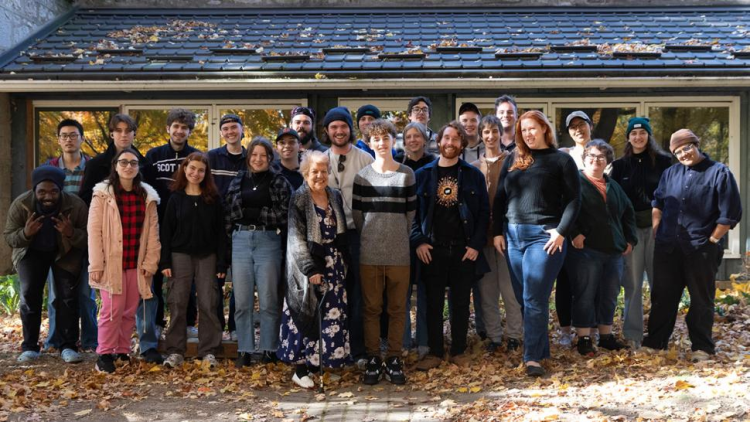Humber Polytechnic students in the Film and Television Production program embedded sustainable practices into their final capstone projects which earned several of them coveted recognition for their efforts.

Robyn Laliberte-Gray, a professor in the Film and Television Production program, said that six of the semester's seven capstone projects were awarded a Green Seal for Students Certification from the Environmental Media Association.
Since 2024, the Film and Television Production program has covered different aspects of sustainability to equip learners with knowledge on environmentally sustainable filmmaking. Students learn about sustainable practices in their Production Coordination courses and then apply what was learned on their productions, including their capstone projects.
In addition to traditional roles such as director and producer, students are also assigned a sustainability coordinator role in their productions. The role is responsible for minimizing waste, considering better catering options and overall greener operations during the filming of student productions.
This year, the students were asked to come prepared with a sustainability mindset during pre-production so that the eco-friendly practices could be discussed and implemented before filming starts.
"Film and television productions are very resource-intensive and can generate significant waste and carbon emissions," said Laliberte-Gray. "The industry is waking up to this and is starting to take steps in the right direction to reduce its impact."
The films to receive the certification include Sinn Seanmhair (The Great Grandmother), My Fighter, Now Is Not a Good Time, Evergreen Avenue, Family Values and For Vaani.
Addie Ogilvie directed Sinn Seanmhair with William Priems serving as producer and Shane Dolman-Smith as the sustainability coordinator.
To help reduce their environmental impact, the production insisted on reusable water bottles and coffee cups. Dolman-Smith connected with the other productions to see what items they would be purchasing, such as props, so they could share them.
Unwanted items at the end of filming were donated to organizations that would resell them, so they avoided winding up in landfill.
"This mindset helps develop critical thinking skills because the students need to think more about where they will be sourcing items and if they will need to be disposed of afterwards," said Laliberte-Gray.
Dolman-Smith also conducted garbage and recycling audits to ensure nothing was being put in the wrong bin.
In the end, the production generated just a single garbage bag of waste.
"Having a sustainability coordinator and an emphasis on environmentally sustainable practices on set never stopped us from achieving what we wanted to creatively with this film, while also playing an important role in helping the environment," said Ogilvie.
Priems added that this approach to filmmaking also helped with budget pressures. Being creative to source the items before sharing them among the productions helped reduce costs.
"We were really proud to obtain the Green Seal, and I hope in the future it becomes a standard of film and TV production," he said.
Their production was the first to receive the Green Seal certification.
Dolman-Smith embraced his role as sustainability coordinator and says it has motivated him to continue to fight for a green future for the planet. He has become a Sustainability Ambassador for the Green Film School Alliance and attended a Sustainability Production Forum in Toronto.
"I really liked being the sustainability coordinator and taking the time and effort to see what we could do to help the environment," said Dolman-Smith.
"For the amount of work that's required and the impact it can have, it feels like a no-brainer to me to have a sustainability coordinator on future productions," added Ogilvie.
Laliberte-Gray spoke about sustainability in film production at Humber's Building Brilliance Showcase on June 5.
Find out more by visiting Humber's Film and TV Production program website.













